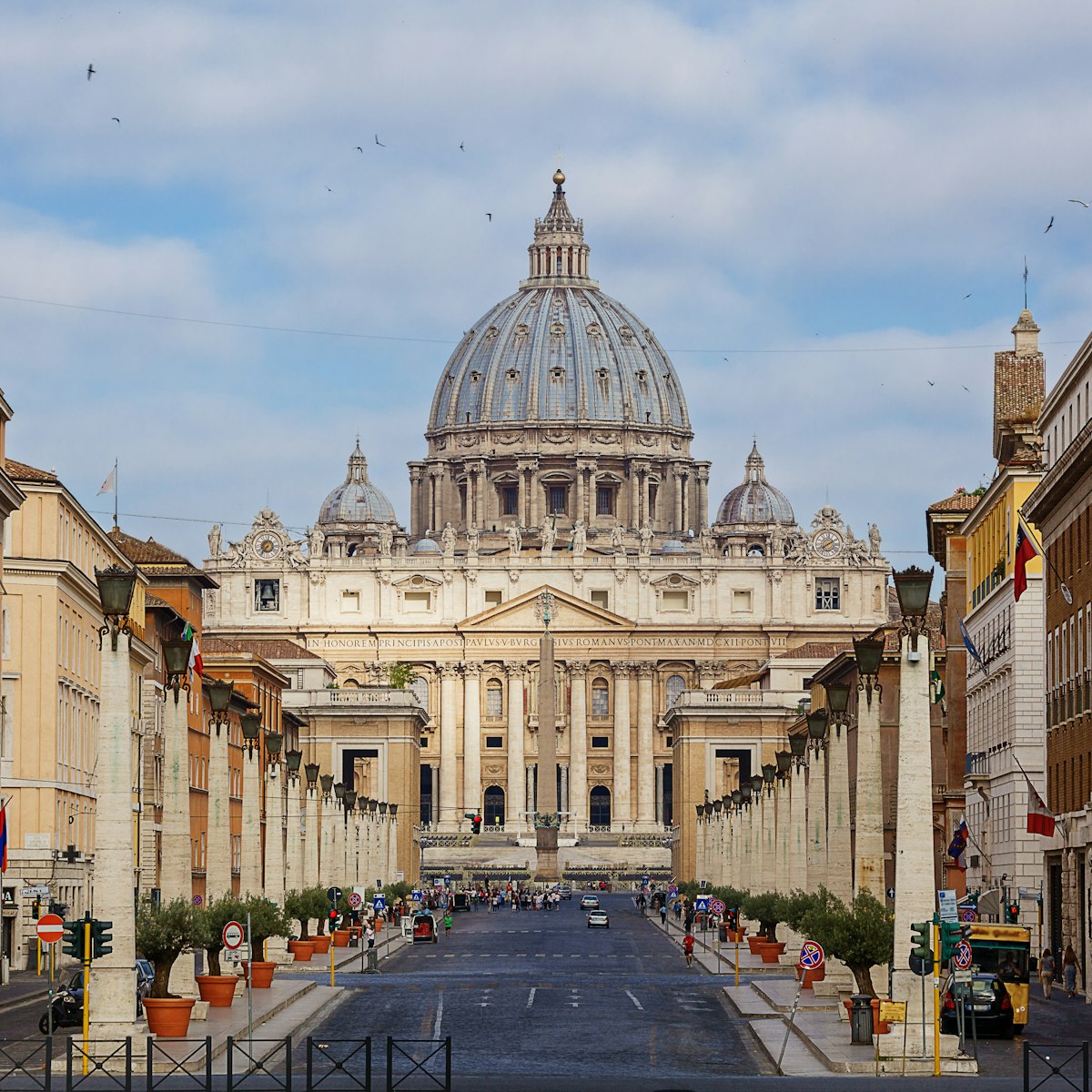One of Lazio's prize sights, the ruins of ancient Rome's seaport are wonderfully complete, like a smaller version of Pompeii. Highlights include the Terme di Nettuno (Baths of Neptune), a steeply stacked amphitheatre, some exquisite mosaics and an ancient cafe, complete with traces of its original menu.
Note that the site is huge and you'll need a few hours to do it justice. Also, it gets busy at weekends but is much quieter on weekdays.
To help with navigation, it's worth arming yourself with a site map, which you can buy for €2 at the ticket office. Audio guides are also available for €5.
Just beyond the ticket office, Porta Romana gives onto the Decumanus Maximus, the site's central drag, which runs over 1km to Porta Marina, the city's original sea-facing gate. At the time of research, however, it was blocked off about two-thirds of the way down, by the Tempio dei Fabri Navales.
On the Decumanus, the Terme di Nettuno is a must-see. This baths complex, one of 20 that originally stood in town, dates from the 2nd century and boasts some superb mosaics, including one of Neptune riding a seahorse chariot. In the centre of the complex are the remains of an arcaded palestra (gym).
Near the Terme is the Teatro, an amphitheatre originally built at the end of the 1st century BC by Agrippa and later enlarged to hold 4000 people.
The grassy area behind the amphitheatre is the Piazzale delle Corporazioni (Forum of the Corporations), home to the offices of Ostia's merchant guilds. The mosaics that line the perimeter – ships, dolphins, a lighthouse, elephants – are thought to have represented the businesses housed on the square: ships and dolphins indicated shipping agencies, while elephants probably signalled businesses involved in the ivory trade.
Further down the Decumanus, the Forum, Ostia's main square, is overlooked by what remains of the Capitolium, a temple built by Hadrian and dedicated to Jupiter, Juno and Minerva.
Nearby is another highlight: the Thermopolium, an ancient cafe, complete with bar, fragments of its original frescoed menu, and a small courtyard where customers would have relaxed around a fountain. To the north of this are two of the so-called case decorate. These frescoed houses are off limits to unaccompanied visitors but can be entered on a free guided tour at 10.30am each Sunday – see the website for booking details.
Over on the other side of the Decumanus are the remains of the 2nd-century Terme del Foro, originally the city's largest and most important baths complex. Here, in the forica (public toilet), you can see 20 well-preserved latrines set sociably in a long stone bench.
For more modern facilities, you'll find a cafeteria, toilets and a gift shop to the north of the Decumanus (head up Via dei Molini). Also here is a small museum displaying statues and sarcophagi excavated on the site.








